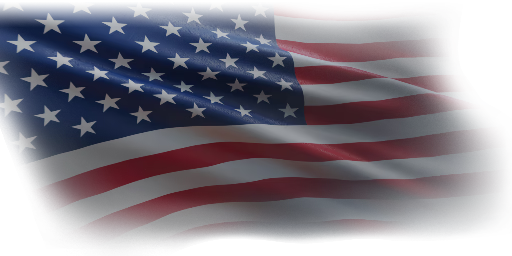
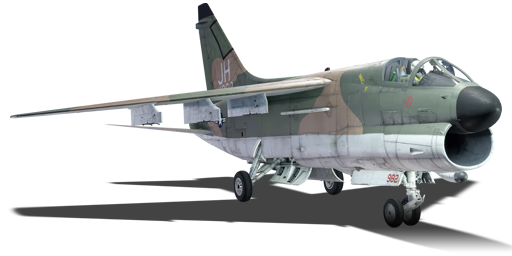


In the early 1960s, the US Navy needed a new naval strike aircraft to replace the A-4 Skyhawk. Ling-Temco-Vought (LTV) developed the A-7 based on the F-8 Crusader, but smaller and subsonic to reduce costs. The A-7 won the competition and was named A-7 ‘Corsair II’ in homage to the F4U Corsair. The A-7A started production in 1966 and saw action in Vietnam. The USAF developed the A-7D in 1968 with improved avionics, a stronger engine, and an M61 Vulcan cannon. Over 450 A-7D units were produced from 1968 to 1975. The A-7D served until the early 1990s before retirement. The A-7D included a new M61A1 rotary gun instead of the regular 20mm cannons of the A-7, a new TF-41 engine and a different central computer.
Introduced in Update “Hot Tracks”, the A-7D is a light subsonic attack aircraft featuring a single nose-mounted M61 rotary cannon, six wing-mounted pylons and two fuselage-mounted pylons to which various bombs, missiles, and rockets are mounted in a multitude of configurations to suit the pilot in command. Even though explicitly built for close air support and bombing missions, in a pinch, the A-7D attacker can contend with any aircraft it may end up tangling with. Being subsonic at a BR where supersonic interceptors are very common, the aircraft is not ideal for air battles; instead, it excels at ground attack with its wide array of precision-guided weapons.
flaps
flaps
flaps
brake
| Belt | Belt filling | Armor penetration (mm) at a distance: | |||||
|---|---|---|---|---|---|---|---|
| 10 m | 100 m | 500 m | 1000 m | 1500 m | 2000 m | ||
| HEF-I/API-T/AP-I | 40 | 36 | 22 | 12 | 6 | 3 | |
| HEF-I/HEF-I/API-T/HEF-I/HEF-I/AP-I | 40 | 36 | 22 | 12 | 6 | 3 | |
| API-T/AP-I/AP-I/AP-I/HEF-I | 40 | 36 | 22 | 12 | 6 | 3 | |
| HEF-I/AP-I/AP-I | 40 | 36 | 22 | 12 | 6 | 3 | |
| Name | Weight | Slot | ||||||||
|---|---|---|---|---|---|---|---|---|---|---|
| 19 × | 229.6 kg |  |  |  |  |  |  | |||
| 6 × | 707.4 kg | 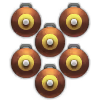 |  |  |  | |||||
| 6 × | 1,445.4 kg |  |  |  |  | |||||
| 6 × | 829.8 kg | 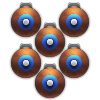 |  |  |  | |||||
| 6 × | 1,524 kg | 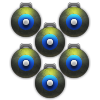 |  |  |  | |||||
| 362.4 kg |  |  | ||||||||
| 401.4 kg |  |  |  |  |  |  | ||||
| 3 × | 1,340.4 kg | 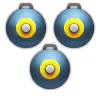 |  |  |  | |||||
| 893.6 kg | 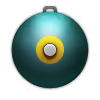 |  |  |  |  |  | ||||
| 893.6 kg | 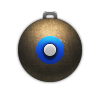 |  |  |  |  |  | ||||
| 4 × | 1,449.7 kg | 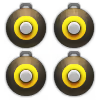 |  | |||||||
| 1,027 kg | 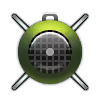 |  |  |  | ||||||
| 3 × | 631.4 kg | 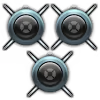 |  | |||||||
| 2 × | 724.8 kg | 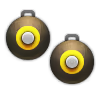 |  | |||||||
| 614.4 kg | 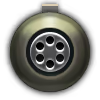 |  | ||||||||
| 766.6 kg | 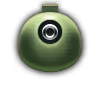 |  | ||||||||
| 76.4 kg |  |  | ||||||||
| 76.9 kg | 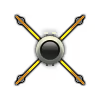 |  | ||||||||












Flight performance |
|---|
Survivability |
|---|
Weaponry | ||||
|---|---|---|---|---|